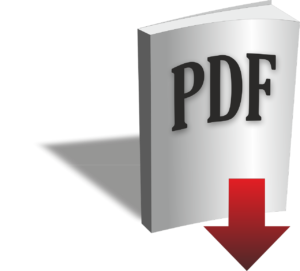
Why PDF Security Is Important to Your Company
Last updated on June 23rd, 2022 at 04:30 am
Protecting business documents is more critical today than it ever has been.
Sensitive information landing in the wrong hands can result in expensive lawsuits and fines due to data leaks, misuse of your intellectual property (IP), or help your competitors gain an edge. When that happens, not only will it damage your reputation, it will also reduce people’s confidence in your ability to run operations.
PDF is widely accepted and preferred in the business world because of its ubiquitous file format, and also because it has the significant advantage of compressing massive files to a relatively small size. Whether you are sending invoices, circulating memos, or maintaining client records in a consistent format, by using PDF, you can be sure that the recipient is viewing the document the way it was intended to be viewed.

However, many users feel the need to further safeguard their PDF file content from unauthorized access, sharing, copying, printing, and screenshots.
The reasons to protect a PDF file can be as diverse as the reasons for creating it. According to a recent global survey, nearly 6 out of 10 respondents said they have accidentally shared a document with someone they shouldn’t have. The same study also highlighted that document security risks are growing due to the proliferation of mobile devices and increased connectivity.
Stats like these are the reason a whole spectrum of security options for PDF files are available in the market. You can choose everything from no security at all to applying various levels of protection, including password, encryption, and even digital rights management (DRM).
Other than accidental sharing and access to information, here are some more reasons why protecting PDF files is critical:
Protect Intellectual Property
PDF is one of the preferred file formats to share information. PDF files are commonly used by businesses to store internal processes, trade secrets, and customer billing details. If these files are not appropriately protected, you could suffer from a data breach. If you genuinely value your intellectual property and don’t want it to be stolen, you need to secure your PDF files. Encryption and DRM controls come in to play here, helping you protect assets and ensuring they do not end up in the wrong hands.
Prevent Unwanted Distribution
PDF files are commonly used in the publishing industry. The absence of appropriate security measures may result in drafts set for publication being read and shared online before they hit the printing press. Or once published, being shared on unauthorized sites. This information leakage will result in revenue loss for both the author as well as the publisher.
Control Viewing Rights
Businesses that deal with government agencies like the Department of Defense, often handle sensitive information in PDF files that can only be shared with recipients who have a specific role. This is where DRM will help you maintain the balance between information sharing and security by ensuring role-based access to PDF files. With DRM controls in place, you will be able to control editing rights, file downloads, grant role- and location-specific viewing rights, and track authorized printing of PDF documents.
Stop Unwanted PDF Sharing, Printing
Do you remember the WikiLeaks CIA leak where thousands of classified documents were exposed? That could happen because PDFs are very easy to share and can be forwarded instantly as an email attachment. Thanks to technologies like DRM, this fear can be eliminated.
If you want to share a PDF file with more than a handful of people, choose advanced security tools to provide access using public key technology instead of passwords. Transparent and secure key transmission will ensure recipients will not be able to share files even if they try. Protecting your PDF files only with passwords is not a safe practice as passwords can be easily removed with password recovery software that is readily available online, or just shared with others.
Similar to sharing, the printing of PDFs is another big concern. If your PDF can be printed, then it can be mailed or scanned and republished. With adequate DRM controls in place, you can disable the “print” option. If you want to allow printing then you can watermark documents with information to identify the user who printed them.
Conclusion
While encryption is used to secure PDF files, it is a good idea to enforce advanced controls to prevent even authorized recipients from inappropriately using the information. PDF security may consist of encryption, permissions, restrictions, DRM controls, Public Key Technology (PKI), licensing controls, and password protection. The effectiveness of security controls will depend on your choice of tools. If the tools are weak or can be easily sabotaged, they may add no value.
Do you think PDF security is essential to your business? If so, how do you protect your PDF documents?. Make sure that you have covered all the points mentioned above to ensure your PDF security is effective.
Read Dive is a leading technology blog focusing on different domains like Blockchain, AI, Chatbot, Fintech, Health Tech, Software Development and Testing. For guest blogging, please feel free to contact at readdive@gmail.com.
